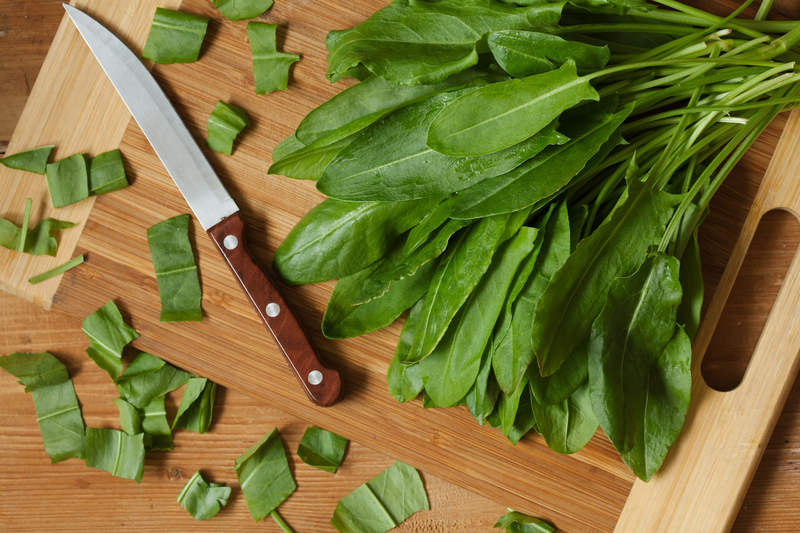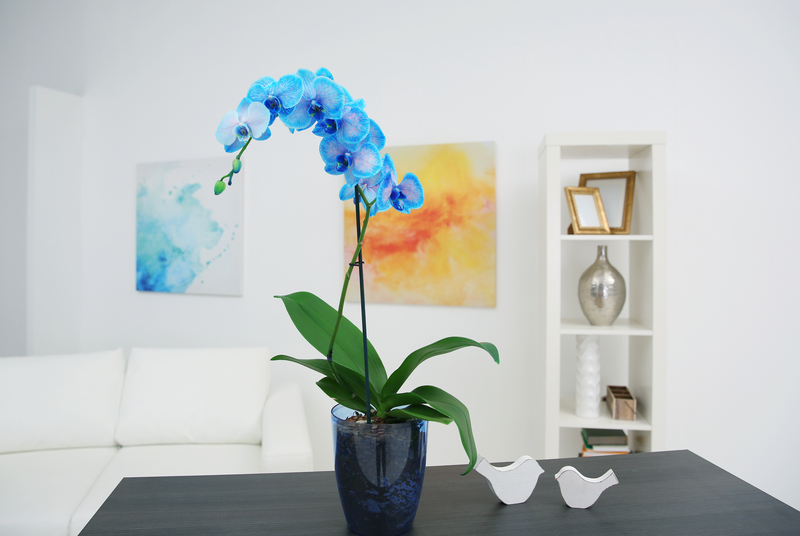A fresh perspective on container gardening
Posted on 01/10/2025
A Fresh Perspective on Container Gardening: Innovation and Inspiration
Container gardening has long been cherished as a versatile, accessible, and rewarding method for growing plants--be they vegetables, herbs, flowers, or ornamental greenery. Yet, as urban landscapes evolve and individuals seek more sustainable, creative forms of interacting with nature, container gardening is experiencing an exciting renaissance. This comprehensive guide delves deep into a new perspective on container gardening, offering innovative ideas, proven techniques, and actionable steps to help you maximize creativity, yield, and enjoyment--whatever your available space or skill level.
Why Choose Container Gardening? Modern Benefits Unveiled
Traditional in-ground gardening certainly has its allure, but container gardening stands out, especially in today's fast-paced world. Here's why more and more gardeners--novices and experts alike--are embracing this trend:
- Space Efficiency: Perfect for apartment balconies, small patios, rooftops, or even sunny windowsills.
- Portability: Easily move plants to capitalize on sunlight, shelter them from storms, or redesign your landscape at will.
- Soil Control: Manage growing medium quality, tailoring it to suit sensitive plant varieties or organic preferences.
- Pest and Disease Management: Elevation and container boundaries reduce exposure to common ground-based pests and plant diseases.
- Accessibility: Raised containers and vertical arrangements provide comfort for gardeners with mobility issues.
- Creative Expression: Unlimited combinations of containers, layouts, and plant types create living works of art.
These advantages make container gardening not only practical but also incredibly adaptable to evolving lifestyles and aesthetic tastes.

Innovative Container Gardening Ideas: Thinking Beyond the Pot
Gone are the days when container gardening meant a clay pot with a single geranium. A fresh viewpoint on container gardening encourages you to push boundaries and experiment:
1. Upcycled and Unconventional Containers
The essence of modern container gardening lies in sustainability and creativity. Look around your home or those weekend flea markets for potential planters:
- Old boots, teapots, or kitchen colanders
- Recycled tires, buckets, or wooden crates
- Vintage suitcases or dresser drawers
- Bottle gardens--cut plastic bottles to house herbs
Tip: Always add drainage holes and use food-safe materials if growing edibles.
2. Vertical and Hanging Gardens
Urban dwellers take note: vertical container gardening maximizes space and transforms plain walls into lush, living tapestries. Techniques include:
- Wall-mounted pockets or fabric planters
- Stacked shelves or ladder structures
- Hanging baskets, trellises, or macrame hangers
- Pallet gardens repurposed for herbs and succulents
Vertical arrangements are stunning and functional, letting you grow more in less space.
3. Edible Container Gardens
The trend of growing food in containers is booming. Whether you have a sunny steps or urban patio, containers allow for a wide variety of edible crops:
- Salad greens, spinach, and arugula
- Cherry tomatoes and bush beans
- Herbs like basil, thyme, and chives
- Strawberries and dwarf fruit trees
Mix edible flowers like nasturtiums for color, flavor, and pollinator support.
4. Multi-Level and Modular Designs
Stacking containers or using modular kits allows you to create dynamic, space-saving displays. Tiered plant stands and modular cube systems are perfect for:
- Diverse micro-gardens--like a mini herb spiral in containers
- Easy seasonal changes--swap out annuals or rotate vegetables
- Improved drainage and artistry--combine plants with complementary needs and colors
Reimagining Plant Selection: The Right Plant, The Right Container
Adopting an innovative container gardening approach also means rethinking how you pair plants with pots. Consider:
Assessing Space and Roots
Choose plants whose root systems match your container's depth and width. Herbs, lettuces, and shallow-rooted flowers thrive in small pots, while tomatoes, peppers, and dwarf citrus need larger, deeper containers.
Mixing Textures and Heights
Combine thrillers (tall centerpieces), fillers (bushy mid-height plants), and spillers (trailing vines) for dynamic arrangements. Experiment with foliage variations, seasonal color shifts, and even integrating edibles among ornamentals.
Understanding Plant Companions
Container gardens can leverage the benefits of companion planting. For instance, basil and tomatoes grow brilliantly together, while marigolds deter pests from container vegetables.
Soil, Water, and Feeding: The Science Behind Flourishing Container Gardens
A truly fresh perspective on container gardening recognizes that containers have unique needs. Here's a closer look at best practices:
1. Choosing the Right Potting Mix
Regular garden soil is too dense for containers. Use a high-quality potting mix that is:
- Lightweight and well-draining--to prevent root rot
- Rich in organic matter--helps retain moisture and provides nutrients
- Aerated--to encourage healthy root development
Some mixes are specialized for succulents, orchids, or vegetables--choose accordingly.
2. Watering Wisely
Containers dry out faster than garden beds. Here are water-saving, plant-friendly tips:
- Check soil moisture daily, especially in summer
- Water deeply until it runs from the drainage holes
- Use mulches--like pebbles, bark, or compost--to retain moisture
- Try self-watering planters or install drip irrigation in larger displays
3. Fertilizing for Success
Plants in containers exhaust soil nutrients quickly. Feed regularly with:
- Slow-release organic fertilizer at planting time
- Liquid feeds (diluted) every few weeks for heavy feeders
- Occasional micronutrient supplements like seaweed or compost tea
Monitor for yellowing leaves or stunted growth--signs your plants may need a boost.
Seasonal Strategies for Year-Round Container Gardening
With a bit of planning, your patio, balcony, or windowsill can be vibrant in every season.
Spring and Summer
- Plant annuals, heat-loving vegetables, and fragrant herbs
- Move containers outdoors for sun and pollinator access
- Rotate flowering displays for continuous color
Fall and Winter
- Switch to cold-hardy greens (like kale, chard, or pansies)
- Add evergreens or winter-flowering shrubs to large planters
- Bring delicate pots inside or use frost cloths in colder climates
- Decorate with ornamental cabbages, berries, and festive accents
Embracing a year-round container garden invites you to express seasonal creativity and enjoy homegrown produce regardless of the weather.
Container Gardening for Wellness and Sustainability
Adopting a modern container gardening approach is about more than aesthetics. Recent studies link container gardening to improved mental health, increased physical activity, and more sustainable living. Here's how:
- Reducing Food Miles: Growing herbs, salads, or tomatoes at home cuts down on store trips and packaging.
- Stress Relief: Tending to plants, even on a windowsill, promotes mindfulness and relaxation.
- Community and Connection: Sharing seeds, cuttings, or harvests fosters local bonds and horticultural exchange.
- Learning and Adaptation: Experimenting with plant types and materials hones your gardening skills and environmental understanding.
Common Challenges and Fresh Solutions in Container Gardening
Even with all its perks, gardeners sometimes encounter hurdles. Here's how to tackle them with a new perspective on container gardening:
1. Overcoming Overcrowding
It's tempting to fill every spare inch, but overcrowded containers limit plant growth. Adhere to spacing recommendations and thin seedlings as necessary.
2. Managing Watering Issues
Underwatering is common--especially in hot weather. Try self-watering containers. For overwatering, check for clogged drainage holes and use bottom trays judiciously.
3. Battling Pests Organically
Examine plants regularly. Hand-pick or wash off aphids, use neem oil for common pests, and encourage beneficial insects like ladybugs.
4. Addressing Soil Depletion
- Top up soil with compost between seasons
- Rotate crops as you would in ground beds
- Empty, clean, and refresh containers yearly for healthiest results

Expert Tips for a Successful Modern Container Garden
- Choose the right container: Clay is breathable but dries quickly; plastic holds moisture; metal heats up fast--pick according to plant needs and local climate.
- Group containers: Creates a microclimate, conserves moisture, and multiplies visual impact.
- Incorporate scent and texture: Grow lavender, mint, or rosemary for appealing aromas; mix ferns and grasses for tactile interest.
- Experiment with color palettes: Coordinate pots and blooms for a pleasing, cohesive look.
- Keep records: Note planting dates, successes, and lessons learned to improve year after year.
Conclusion: Embrace a Fresh Perspective on Container Gardening
Container gardening in 2024 is more than simply a hobby or a method of growing plants--it's a dynamic, evolving lifestyle choice. By reimagining what qualifies as a "container," prioritizing sustainability, and mastering both the art and the science, you'll find joy in nurturing life and expressing your individuality in any space.
Whether you garden for food, flowers, or pure enjoyment, a fresh perspective on container gardening unlocks endless possibilities. Experiment with new materials and designs, grow a diverse arsenal of plants, and turn every inch of your environment--from patios to windowsills--into a flourishing, personalized oasis.
Start today--and discover just how transformative, inspiring, and rewarding modern container gardening can be.
Further Reading on Modern Container Gardening
- Vertical container garden ideas for small spaces
- Best edible plants for urban pots
- DIY upcycled planters for sustainable gardening
- Easy care tips for thriving balcony gardens

